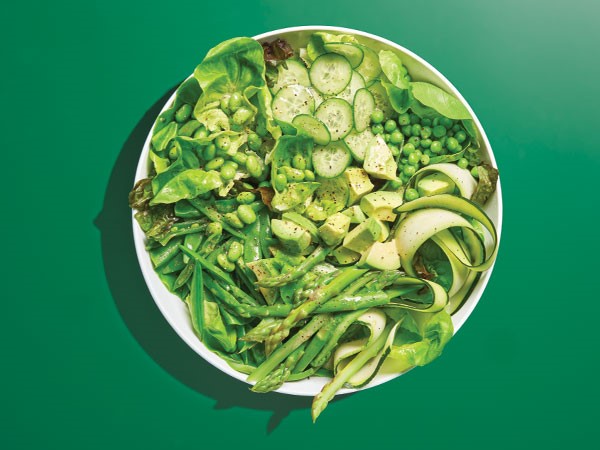Description
When you shop the produce aisles at Hy-Vee, you might notice all the wildly colorful options. But did you know the color of a fruit or vegetable indicates particular nutrients within?
Here's how it works: Living plants make chemicals that defend them against predators and harmful environments. When we eat these chemicals, called phytonutrients, we benefit as well. Research shows that phytonutrients can lower risks for diabetes, cancer and heart disease through their antioxidant or anti-inflammation activity. Phytonutrients are basically a color code for healthy eating.
Here's what you can expect from different colors and why we should all be eating the rainbow of produce.
Benefits of Red Foods
Red pigments found in strawberries, cranberries, red bell peppers, raspberries, red grapes, and tomatoes behave as antioxidants, linked to lowered blood pressure. They also contain vitamin C, which nourishes skin, bones, and connective tissue. Plus, according to some research, certain red foods like grapes contain resveratrol—a compound that protects against cancer, heart disease and dementia. But they all have fiber in common, for regulating blood sugar and aiding digestion.
Benefits of Orange Foods
You can thank vitamins A and C for the orange color in carrots, cantaloupe, oranges, orange bell peppers, and peaches. Beta-carotene pigment (think “carrot”), a precursor to vitamin A, aids vision and may prevent heart disease and cancer. Beta-carotene is also good for the immune system. Eating foods with abundant vitamin C keeps cells healthy.
Benefits of Yellow Foods
Yellow produce such as corn, lemons, yellow bell peppers, yellow squash, and yellow tomatoes get their color from beta-carotene (vitamin A) plus antioxidants that neutralize free radicals. Like other produce, yellow foods provide fiber. In fact, 1 cup of cooked corn furnishes 16 percent of the daily recommendation for fiber.
Benefits of Green Foods
Chlorophyll, which gives these foods like asparagus, broccoli, Brussels sprouts, honeydew melon, kale, kiwi, and salad greens their green color, does not actually deliver health benefits. Those come from vitamins A, C and K; folate; and fiber. Dark leafy greens are especially rich in vitamin K, necessary for blood to clot properly, while folate prevents anemia and helps the body break down and use proteins.
Hyvee Dietitian Expert Tip
Fresh basil adds more than flavor! It also contributes potassium, iron, calcium, and vitamin K.Benefits of Purple Foods
Purple pigments in blackberries, concord grapes, eggplant, plums, purple cabbage, and purple carrots indicate antioxidants that delay cell aging. Purple produce has many health benefits: One-half cup cooked purple cabbage supplies about 30 percent of daily recommended vitamins C and K (normal blood clotting). One cup of blackberries contains 34 percent of daily requirement of vitamin C, 24 percent vitamin K, and 27 percent fiber.
Benefits of Blue Foods
Blue fruits and veggies, such as black currents, blueberries, and elderberries, share many of the same health benefits with purple ones. In addition, blueberries furnish manganese, a trace mineral required for enzyme reactions and proper metabolism.
Also check out Your Guide to Vitamins A, B, C, D, E, and K.


